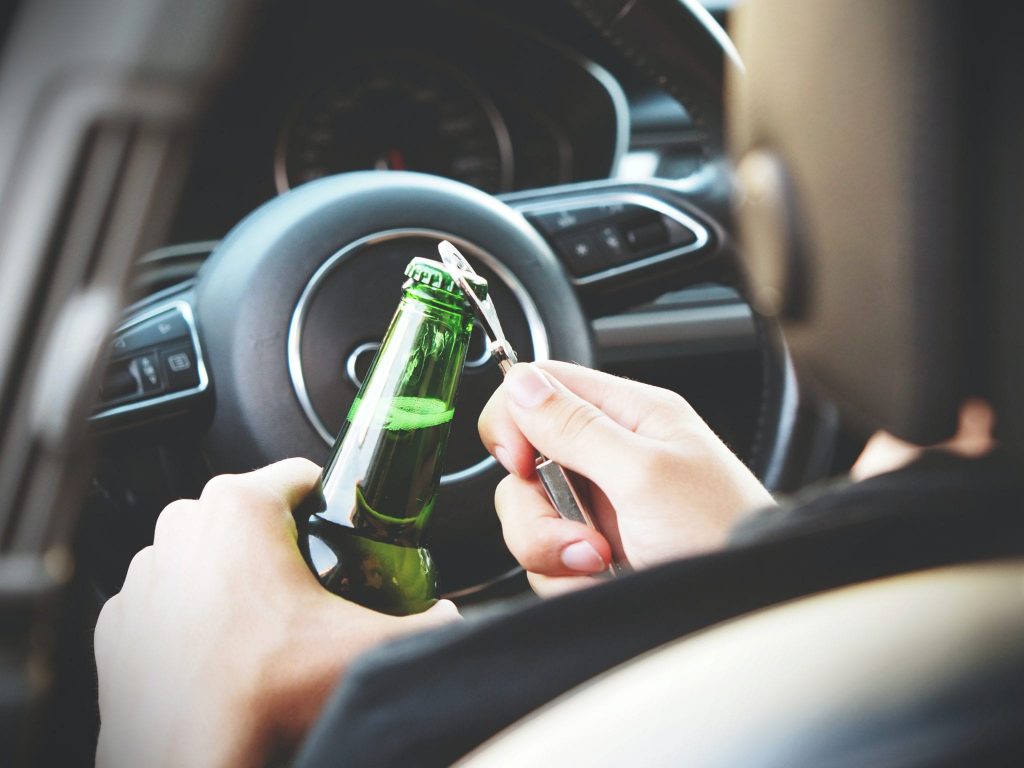
State of alcoholic intoxication:
- alcohol level 0,2 ppm (concentration 0,1 mg alcohol per liter of exhaled air)
- punishing with a fine or imprisonment
The state of strong alcoholic intoxication:
- alcohol level 1,0 ppm (concentration 0,5 mg alcohol per liter of exhaled air)
- punishing with imprisonment
Permille
Permille (‰) means one-thousandth, or tenth of a percent. When it comes to alcohol, ppm is the concentration of alcohol in the blood. 1 part pure alcohol to 1000 parts blood.
PPM and consequences:
- 0,1 – 0,4 – changes in behavior and mental state. There is a tendency to overestimate one’s own abilities. The reaction time is deteriorating. The stopping distance increases by about a third.
- 0,4 – 1,0 – vision, coordination, and speech are significantly impairing.
- 1,0 – 2,0 – loss of balance, lack of coordination, double vision.
- 2,0 – 3,5 – deep sleep.
- > 3,5 – high risk of coma or death.
Alcoholic intoxication
- The state of alcoholic intoxication can be assessed as strong, also with an alcohol concentration below 1,0 ppm, in the presence of aggravating circumstances. Such a circumstance may be, for example, a repeated case of violation.
- Also, the law provides for punishment for those who give alcohol to people about whom they knew that they were going to get behind the wheel. Handing over your car to a drunk driver is also punished.
- If you did not even get behind the wheel but were caught under the influence of alcohol for other violations, then your driver’s license may be revoking.
- The ban on driving while intoxicated applies not only to cars but to all vehicles, including, for example, bicycles.
- There is no way you can speed up the elimination of alcohol from the body. It only takes time.
- The day after drinking alcohol, the effects of alcohol intoxication on the body can still be observing.
- Blood alcohol concentration is influenced by gender, weight, health status, type of drinks consumed, snacks, and rate of consumption.
- Two people who have drunk the same amount of alcohol may have different blood alcohol concentrations.
- The drunk driving ban applies everywhere, including on private roads and fenced-in private areas.
Drug and medication use
- Unlike alcohol, there is no acceptable level for drugs. Even the smallest concentration of drugs while driving will be considered a serious crime.
- If an emergency occurs due to medication, the same legal provisions apply as in the case of drugs.
- Even if a doctor has prescribed a drug for you, you are not allowing to drive if the drug affects you similar to alcohol or drug intoxication, affects your concentration, slows down your reaction speed, affects your vision, etc.
- There is no list of drugs that can be used to drive. It is always your decision and your responsibility to assess your own condition and decide to drive or refrain from driving.
Mobile phone use
Mobile phone use is about as dangerous as drunk driving. It doesn’t matter if you hold the phone in your hands or use the speakerphone for a conversation.
- The greatest danger is the fact that during a conversation you are distracting from the road.
- It is forbidding to use mobile phones, walkie-talkies, and similar devices if this distracts the driver from driving.
- Hands-free devices do not reduce the risk of using phones while driving.
- Sending SMS while driving is the most dangerous way to use a mobile phone while driving.
Statistics
- In Sweden, about 70 people a year die as a result of accidents caused by drunk drivers. This is about 25% of the total number of victims on the road.
- Every day from 15 to 20 thousand people allow themselves to drive drunk.
- Every year about 30 thousand people are convicting of drunk driving, of which about 10 thousand for the use of drugs or medication.
- About 50% of drivers death in solitary accidents were drinking.
- 30% of the dead pedestrians and cyclists were drinking.
- 90% of drunk drivers are men, mostly young and middle-aged.
According to statistics, young drivers are at the highest risk of death on the road.
Picture Credit: Pexels
